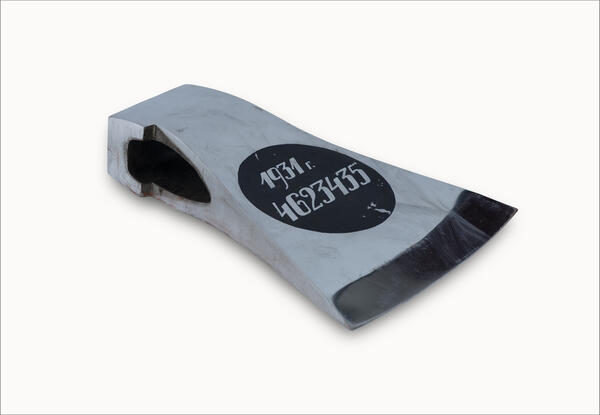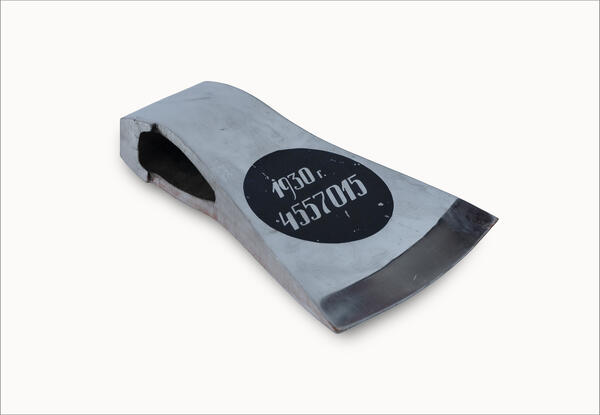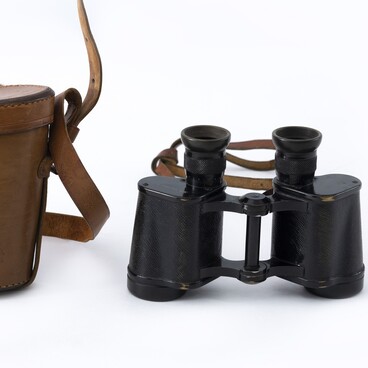Axes were made at the Zlatoust factory from its very foundation in 1754. At first, axes were forged for the factory’s own needs, since until the appearance of the saw in the mid-19th century, they were the principal tool for the work of lumberjacks. For burning charcoal, on which the smelting furnaces of the plant worked, a huge amount of firewood was required.
At the very beginning of the 20th century, to fulfill the orders of the engineering department of the Russian army, the Zlatoust state-owned factory launched the production of all kinds of tools, including several varieties of axes.
In Soviet times, axes became one of the principal products of the Zlatoust factory. In the early 1920s, the production of axes was relatively small, but after the completion of construction and the launch of a new forging shop in 1925, the output began to grow.
In 1927, at the initiative of young workers, the country’s first Komsomol youth shock-work brigade was created in the forging shop under the leadership of Vasily Mikhailovich Simonov. Its goal was to organize a socialist competition to increase labor productivity. As a result, 3,159,640 axes were made that year.
In 1928, when the whole workshop was declared a shock-work shop (and named “The Red Forge”), the production output was increased to 4,343,618 axes. In 1931, when the entire tool factory named after Lenin was declared a shock-work enterprise, the output of axes amounted to 4,623,435 units.
Axes with the factory brand ZIK were famous for their high quality. They were manufactured until the early 1960s. The history department of the Zlatoust City Museum of Local Lore presents a diagram of the growth in the production of axes. The “diagram” is made in the form of a set that includes nine polished axes of different sizes — from miniature to very large ones.
Each axe is engraved with the year and the number of axes produced by the Zlatoust factory over the period from 1922 to 1931. These are duplicates of the tools that were mounted on the stand and arranged as a production growth diagram. It was given as a gift to the All-Union Conference of the USSR Communist Party of Bolsheviks. In Soviet times, the diagram was exhibited at the Central Museum of the Revolution in Moscow.
At the very beginning of the 20th century, to fulfill the orders of the engineering department of the Russian army, the Zlatoust state-owned factory launched the production of all kinds of tools, including several varieties of axes.
In Soviet times, axes became one of the principal products of the Zlatoust factory. In the early 1920s, the production of axes was relatively small, but after the completion of construction and the launch of a new forging shop in 1925, the output began to grow.
In 1927, at the initiative of young workers, the country’s first Komsomol youth shock-work brigade was created in the forging shop under the leadership of Vasily Mikhailovich Simonov. Its goal was to organize a socialist competition to increase labor productivity. As a result, 3,159,640 axes were made that year.
In 1928, when the whole workshop was declared a shock-work shop (and named “The Red Forge”), the production output was increased to 4,343,618 axes. In 1931, when the entire tool factory named after Lenin was declared a shock-work enterprise, the output of axes amounted to 4,623,435 units.
Axes with the factory brand ZIK were famous for their high quality. They were manufactured until the early 1960s. The history department of the Zlatoust City Museum of Local Lore presents a diagram of the growth in the production of axes. The “diagram” is made in the form of a set that includes nine polished axes of different sizes — from miniature to very large ones.
Each axe is engraved with the year and the number of axes produced by the Zlatoust factory over the period from 1922 to 1931. These are duplicates of the tools that were mounted on the stand and arranged as a production growth diagram. It was given as a gift to the All-Union Conference of the USSR Communist Party of Bolsheviks. In Soviet times, the diagram was exhibited at the Central Museum of the Revolution in Moscow.







